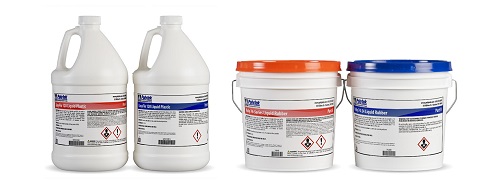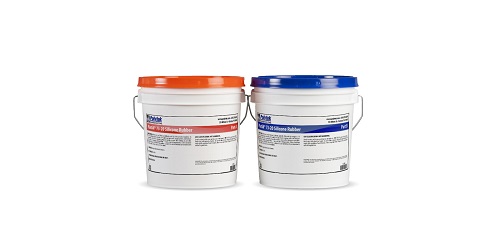Tek-Tip: How Cold Weather Affects Polytek® Products
How cold temperatures affect the following Polytek ® products:
NaturFormTM Latex
Pol-Ease® 2601 Release Agent
Polyurethane Rubbers, Casting Plastics & Foams
Silicone Rubbers
Latex
Our latex-containing products: NaturFormTM 30 Mask Making Latex Rubber , NaturFormTM 60 Molding Latex Rubber , NaturFormTM 60-R Molding Latex Rubber , NaturFormTM 74 Molding Latex Rubber , and NaturFormTM 74-R Molding Latex Rubber

Unlike the majority of our products, latex will freeze and become permanently unusable . In fact, we do not ship latex if temperatures are too low.
If you currently have latex in storage, make sure that temperatures do not drop below 40°F. Store at temperatures between 50ºF – 70ºF.
If you are making a latex mold in colder temperatures, it will slow the evaporation process.
For further technical information on using latex, view the NaturFormTM Latex Technical Bulletin or NaturFormTM Mask Making Latex Technical Bulletin .
Pol-Ease® 2601 Release Agent

Like NaturFormTM Latex, this water-based release agent Pol-Ease® 2601 is (primarily used when casting plaster or concrete in rubber molds) will freeze in cold temperatures and become unusable.
Polyurethane Mold Rubbers, Casting Plastics & Foams

[product examples — left: EasyFlo 120 Liquid Polyurethane Plastic | right: Poly 74-24 Liquid Polyurethane Rubber ]
Transporting liquid polyurethane products in cold temperatures will not affect them long-term, but these liquids should always be brought up to room temperature (60ºF – 90ºF) before use. Surface and air temperatures should be above 60°F during application and for the entire curing period. For best results, these products should also be stored at room temperature.
Mixing and using polyurethane products at low temperatures will increase viscosity and slow the pour and cure times. Polyurethanes are moisture sensitive, and extended cure times increase the likelihood of moisture contamination. Moisture contamination can cause improper cure of products and, in some cases, may prevent a product from curing entirely.
Silicone Rubbers
[product example — PlatSil® 73-20 Silicone Rubber pictured above]
Similar to polyurethanes, transportation in cold temperatures will not have any long-term impact on liquid silicone rubber. For best results, they should be stored at room temperature (60ºF – 90ºF).
Before mixing and using silicone, always bring the liquid back up to room temperature (60ºF – 90ºF). Working with liquid silicone rubbers at low temperatures will increase the viscosity and slow the pour and cure times (this delay is especially noticeable in platinum silicone rubbers).
Making a mold of a frozen model?
Try an accelerated, tin-cured silicone rubber like TinSil® 80-30 with TinSil FastCat Accelerator.
Do you have questions about your upcoming mold making or casting project?
Get in touch with our technical support team:
800.858.5990
sales@polytek.com
